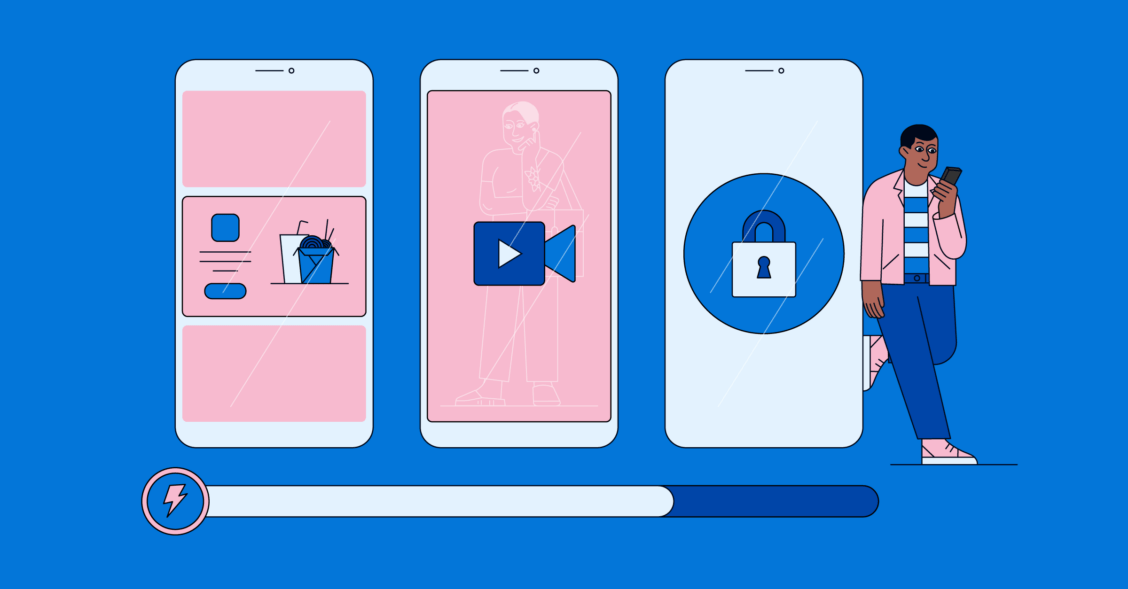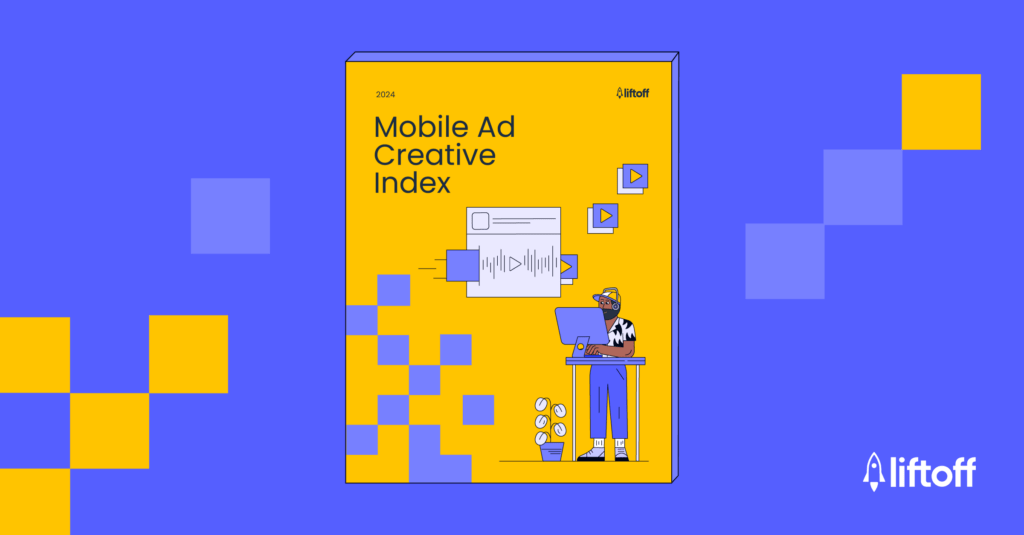
6 Ad Formats to Take Your Mobile In-Game Advertising to the Next Level
With the video game industry’s global market value predicted to reach $321 billion by 2026 and an estimated 2.9 billion mobile game players making up half of global gaming revenue, competition in the mobile market has never been fiercer. Mobile game marketers continue to increase their user acquisition spend and often look to in-game advertising to boost revenue.
However, striking the right balance between profitability and player experience can be challenging. Players want an immersive experience: make your ad too disruptive, and it’s likely just to frustrate rather than drive engagement. Game marketers must also consider which ad formats will engage players enough to keep that advertising revenue coming in.
With all that in mind, it’s easy to get overwhelmed by in-game advertising, especially when you factor in the wide range of ad formats and integration methods (which can also vary depending on genre) available. To assist, we’ll explore the in-game ad formats players will most likely engage with and how they can be implemented.
The benefits of mobile in-game ads
Before unpacking the different ad formats available to marketers today, it’s essential to understand why in-game advertising is such a powerful mobile marketing tool. In-game advertising’s superpower lies in its ability to subtly weave brand messaging into the game world to create a positive, long-lasting brand association.
In-game advertising also allows you to:
Reach a highly engaged audience: Gamers can be a loyal demographic, often dedicating hours upon hours to their favorite games. In-game advertising allows you to target your audience directly in an environment where they’re already highly engaged and more receptive than when using other channels.
Target specific demographics: In-game mobile advertising platforms — like Liftoff (just a little plug) — offer sophisticated targeting options. You can tailor your ads to specific demographics, interests, and even in-game behaviors, ensuring your message reaches the most receptive audience.
See measurable results: In-game ad campaigns offer visibility into real-time data and analytics. You can track impressions, click-through rates, and even in-game actions triggered by your ad, allowing you to optimize your campaigns for maximum impact and ROI.
Utilize unique and immersive ad formats: In-game advertising offers more possibilities in terms of format than advertising running in non-gaming publisher apps. For example, mobile gaming publisher apps lend themselves to immersive formats such as rewarded ads that let players receive in-game items such as currency or extra lives in return for engaging with ads.
Speaking of ad formats, let’s dive into each format available to mobile game marketers today in more detail.
The most common in-game ad formats
There are various in-game ad formats to choose from, meaning there are plenty of ways to tailor your marketing to meet the specific needs and goals of your game or app.
Below, we walk you through the different ad formats, their biggest benefits, and some common pitfalls to avoid.
Banner ads
This tried-and-true banner ad has been around almost as long as the internet itself yet remains as popular as ever. Mobile game banner ads are almost precisely what they sound like. They are compact promotional banners displayed near the top or bottom of a mobile game, allowing users to continue using an app without too much obstruction. Users can tap the ad for more information if they desire.
What are they best used for? Banner ads are static but usually very cost-effective, making them ideal for more straightforward marketing tasks and allowing advertisers to show off their branding. They’re also one of the most cost-effective ads, with a cost per install (CPI) of $2.14. That said, they also have the lowest conversion rate in the gaming space.
Interstitial ads
Interstitials are much more immersive than other formats as they take up the entire screen and can be interactive, such as the option to swipe through different screens. Interstitial ads work best when implemented at natural transition points in a game, such as between levels or online matches. Otherwise, they might disrupt the playing experience.
What are they best used for? Ignoring an interstitial ad is impossible. Interstitials work best when advertisers want to make a significant impact — such as promoting a new product launch or a major live event. While interstitial ads have some of the highest CPI on iOS ($5.84), they’re 30 times more likely to result in an install than banner ads (based on conversion rates).
Playable ads
A playable ad is a minigame or interactive experience that gives users a brief glimpse at what they can expect from the full app. Users can play a level, explore core features, or get a feel for the main mechanics without downloading anything. Since users can experience the game or app firsthand, they’re more likely to continue using it once they download it, improving retention rates and overall engagement.
What are they best used for? Playables are generally the most successful when used in an app similar to what they’re advertising. For example, you might see a playable ad for a puzzle game in a slightly different type of puzzle game. Playable ads have a 27 times higher conversion rate in mobile games than banner ads and offer a slightly more cost-effective CPI on iOS than interstitial ads at $5.84.
Video ads
A video ad is like a TV commercial for your app that appears at natural points in a mobile game’s gameplay or a non-gaming app’s user experience. Their length varies based on what they’re advertising, with some only lasting around 15 seconds, while others run for upwards of a minute. Video ads are easily understood, immersive, and have a clear call to action.
What are they best used for? Video ads are very versatile, making them well-equipped to handle various situations. However, this format excels in complex apps or other features that would otherwise require a lot of text to communicate. They’re 23 times more likely to result in an app/game install for the advertiser than banner ads.
Rewarded ads
These ads offer a specific in-app reward, such as virtual currency, in exchange for a user’s time. Typically, these take the form of video ads that players opt in to watch. You can also get rewarded interstitials that offer rewards for ads that appear automatically during natural app transitions.
What are they best used for? Rewarded ads are great for advertisers who have struggled to find an ad format that appeals to their players, as rewarded ads actively encourage players to engage with them.
Native ads
Over time, some users can start suffering from “ad blindness,” where they become desensitized to ads after seeing so many. Native ads combat ad fatigue by seamlessly blending into the app’s user experience. They’re an exciting choice for mobile games that monetize through in-app ads because they blend into the game experience. For example, a native ad could be a limited-time quest or displayed on a billboard you drive past in a racing game.
What are they best used for? Native ads are helpful when you don’t want to intrude on the user’s experience. Users trust native ads more than other ad formats because they’re built into each app.
Which in-game ad format offers the most value?
With so many different formats to choose from, all of which have their nuances, it can be challenging to determine which will deliver the best results. Still, we’d argue there isn’t a definitive “best format.” Instead, your best choice will depend on your goals and the advertising budget you have to play with. Our 2024 Mobile Creative Ad Index can help us explain.
For example, the report shows us that platforms can influence the CPI of different formats on gaming apps. On iOS, native ads are the most cost-effective option at $3.09, followed by banner ads at $3.26. Meanwhile, interstitial, video, and playable ads each almost hit $6. Comparatively, playables are the cheapest option on Android at $0.60, while native is the most expensive at $1.22.
With that in mind, marketers should use different formats on each platform to achieve the most economical results. That said, success is dependent on more than just costs. The results matter, and the 2024 Mobile Creative Ad Index shows us that the more dynamic ad formats do a better job of capturing the audience’s attention than those that are more static.
We found interstitial ads to be a massive 29 times more likely to lead to a conversion than banner ads, while video and playable ads came in at just over 20 times higher. However, the Index also compared D7 return on ad spend (ROAS) across the ad formats and found that native and banner ads came out on top with the highest ROI at 20.26% and 18.20%, respectively, meaning that you may want to tailor your decision based on the metrics that offer the most value toward you and the specific needs of your game and/or app.



